The challenge
The Port of San Francisco is committed to preserving its historic piers for future generations, but rising sea levels threaten the vitality of its waterfront.
The Port of San Francisco is committed to preserving its historic piers for future generations, but rising sea levels threaten the vitality of its waterfront.
Our coastal resilience specialists evaluated several adaptive flood risk mitigation strategies that can be incorporated into near-term pier restoration projects.
If implemented, the floodproofing measures will protect 15+ piers, creating more than 40 acres of valuable land for future developments.
An urban waterfront renaissance rejuvenated San Francisco’s piers. Many gained new life as places to gather, eat, shop and play for millions of visitors each year. However, many underused piers hold great economic potential for the community. Yet, the very element that attracts people – the piers’ proximity to water – is also a threat.
Tides in the bay will rise at least three feet by 2100. With the potential of tides to rise seven feet (California Ocean Protection Council), the waterfront will face more severe flooding. But the city by the bay is committed to preserving its historic piers for future generations.
The Port of San Francisco (the Port) is confidently confronting the dilemma facing America’s coastal cities: preparing for sea level rise while protecting its waterfront.
The City of San Francisco and the Port’s resilience objective to protect the value of pier infrastructure and reduce seismic and flood risk aligns with investing in pier rehabilitation. But before conversing with stakeholders, the Port wanted to understand what’s possible.
The Port selected Arcadis to lead a study evaluating methods that would help the piers withstand sea level rise and flooding. A key consideration: integrating floodproofing measures into pier restoration projects.
With current and projected flood risk data at hand, our resilience specialists set to work on building a comprehensive set of resiliency solutions. Testing each measure against a rigorous set of criteria, the team narrowed down the list to five adaptive flood risk mitigation strategies and two supplemental measures:

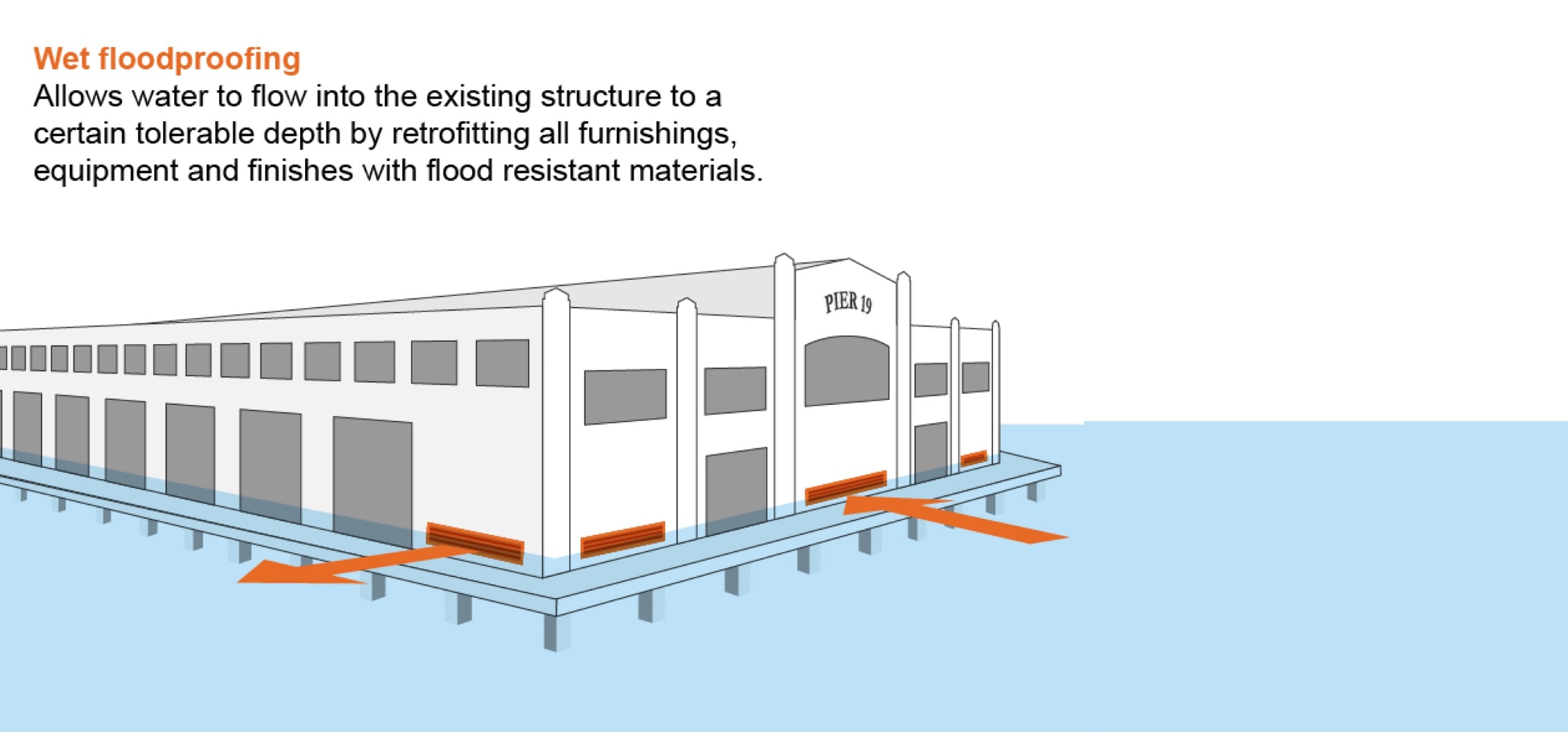
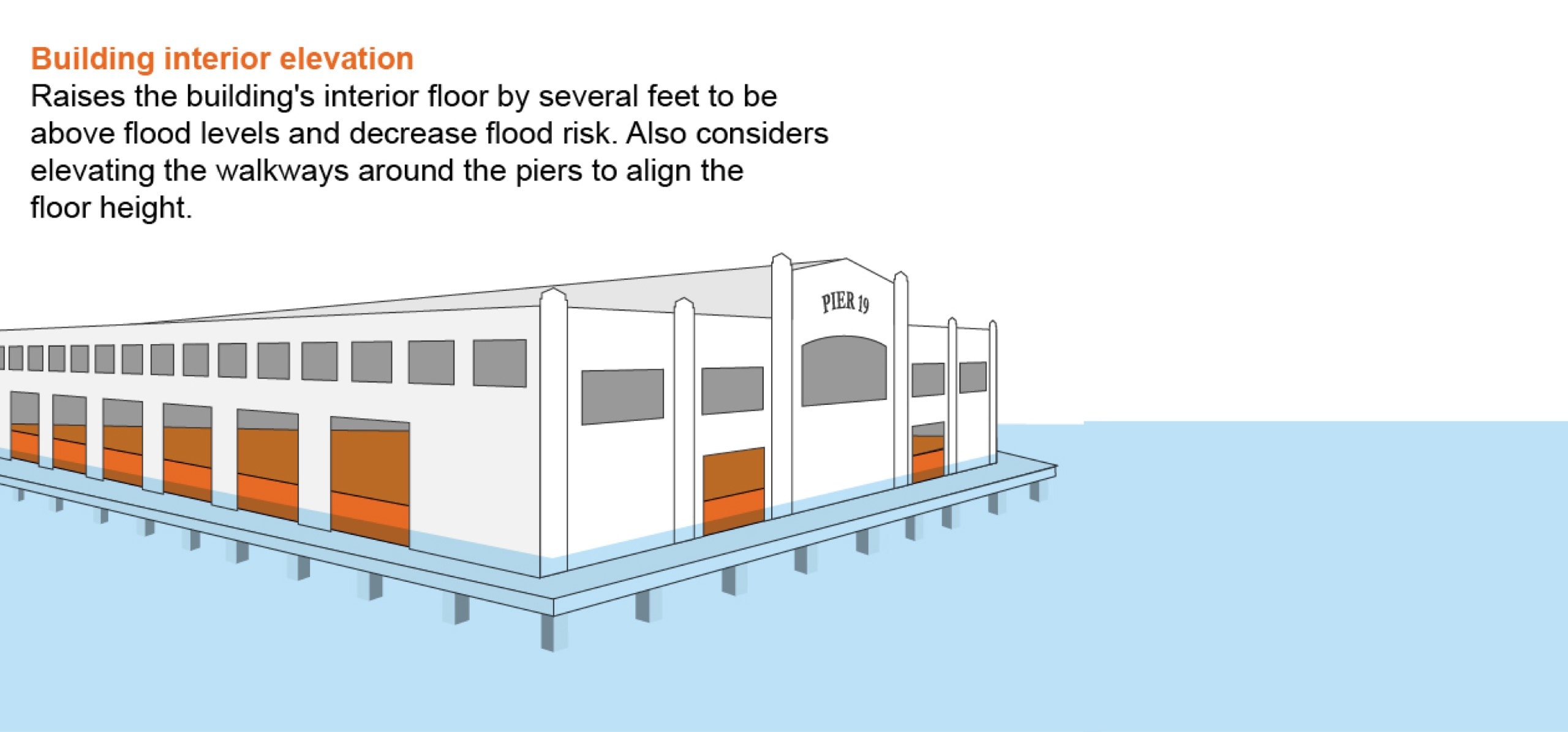
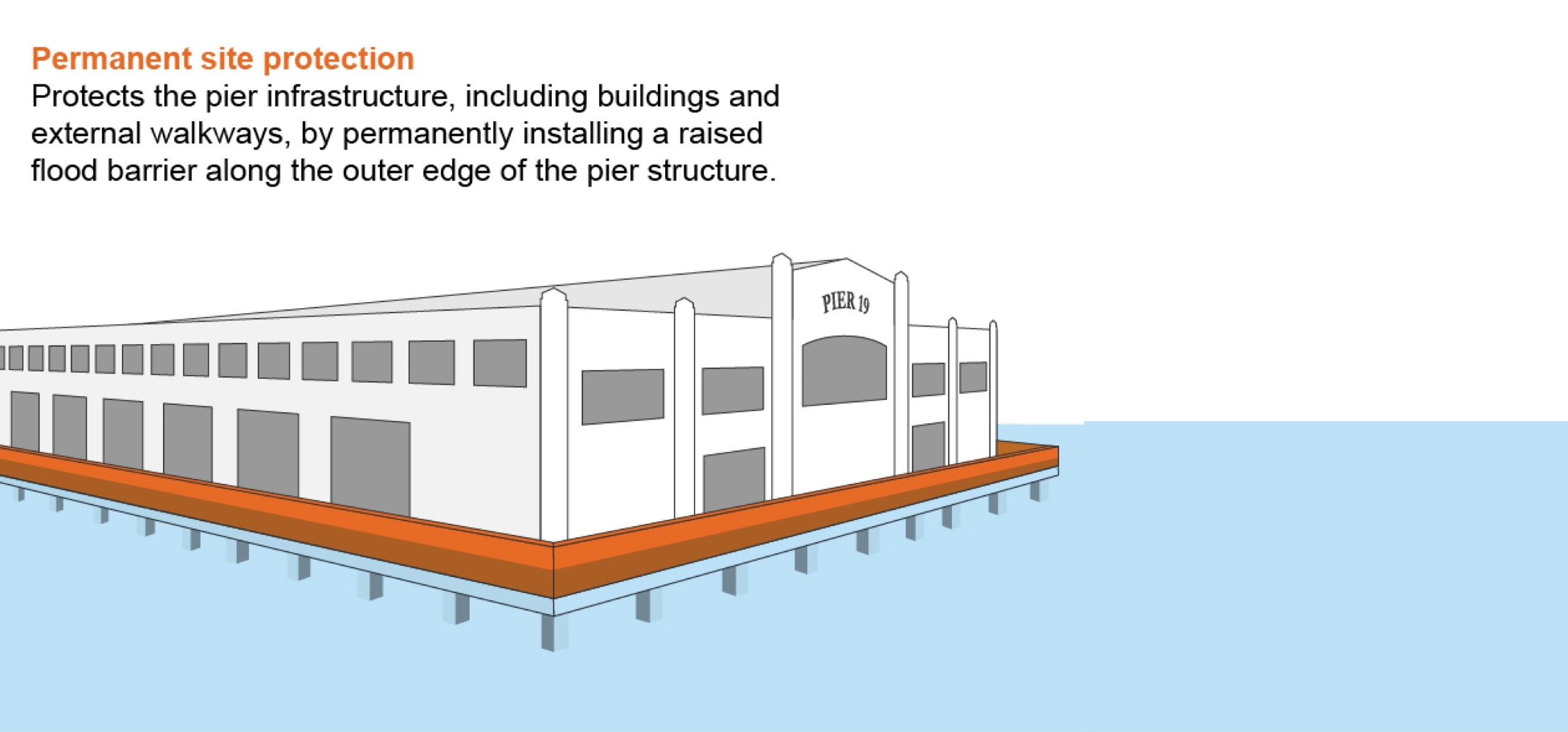
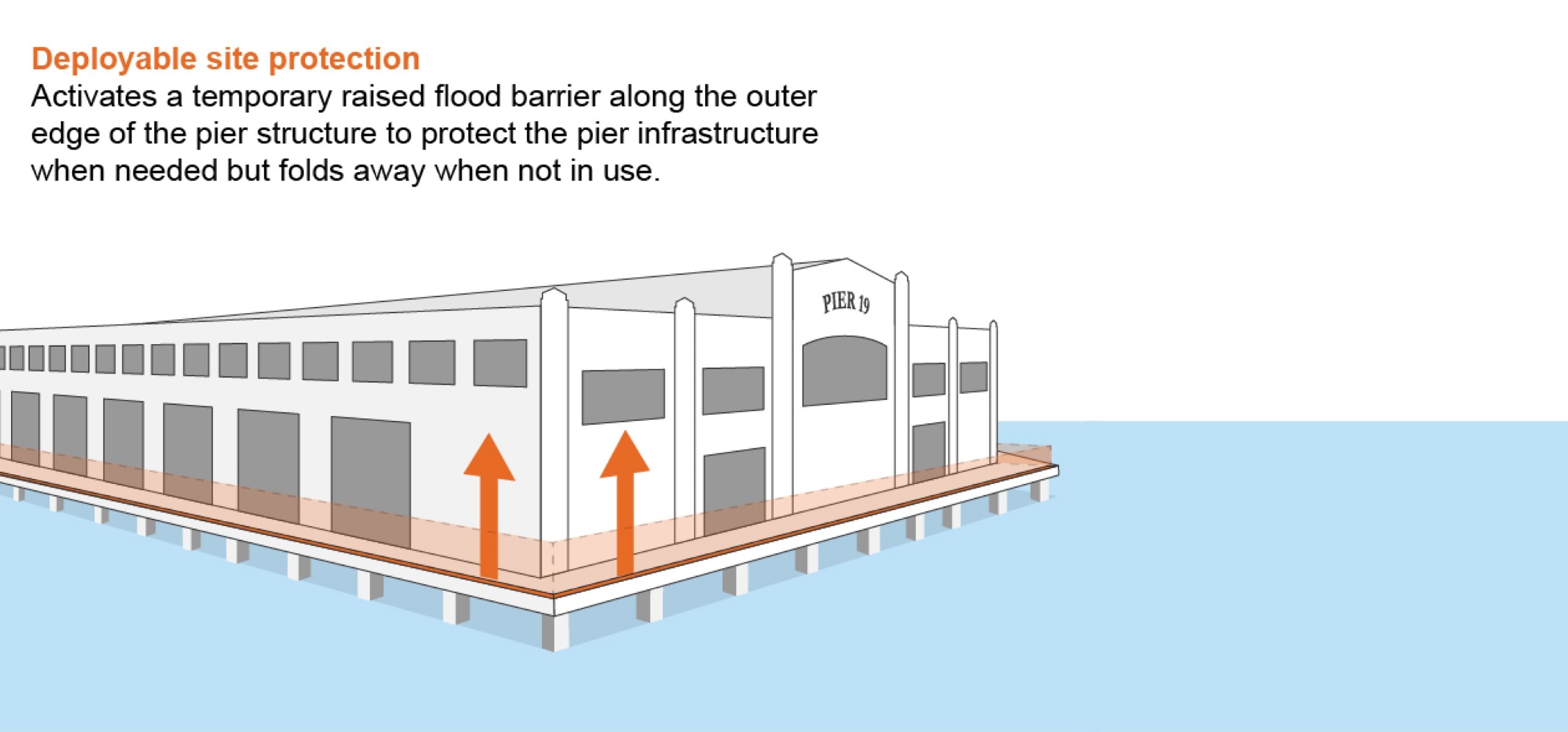
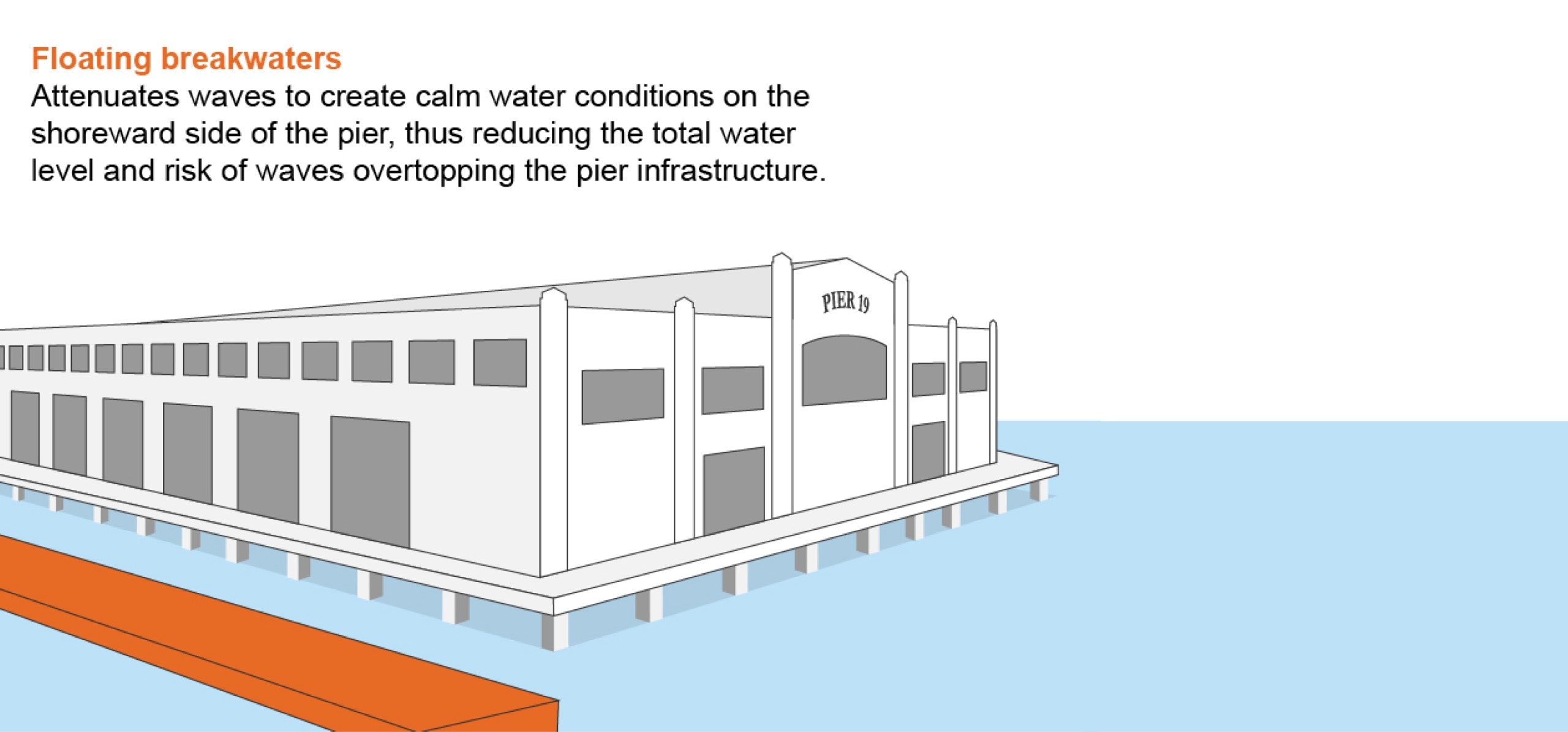
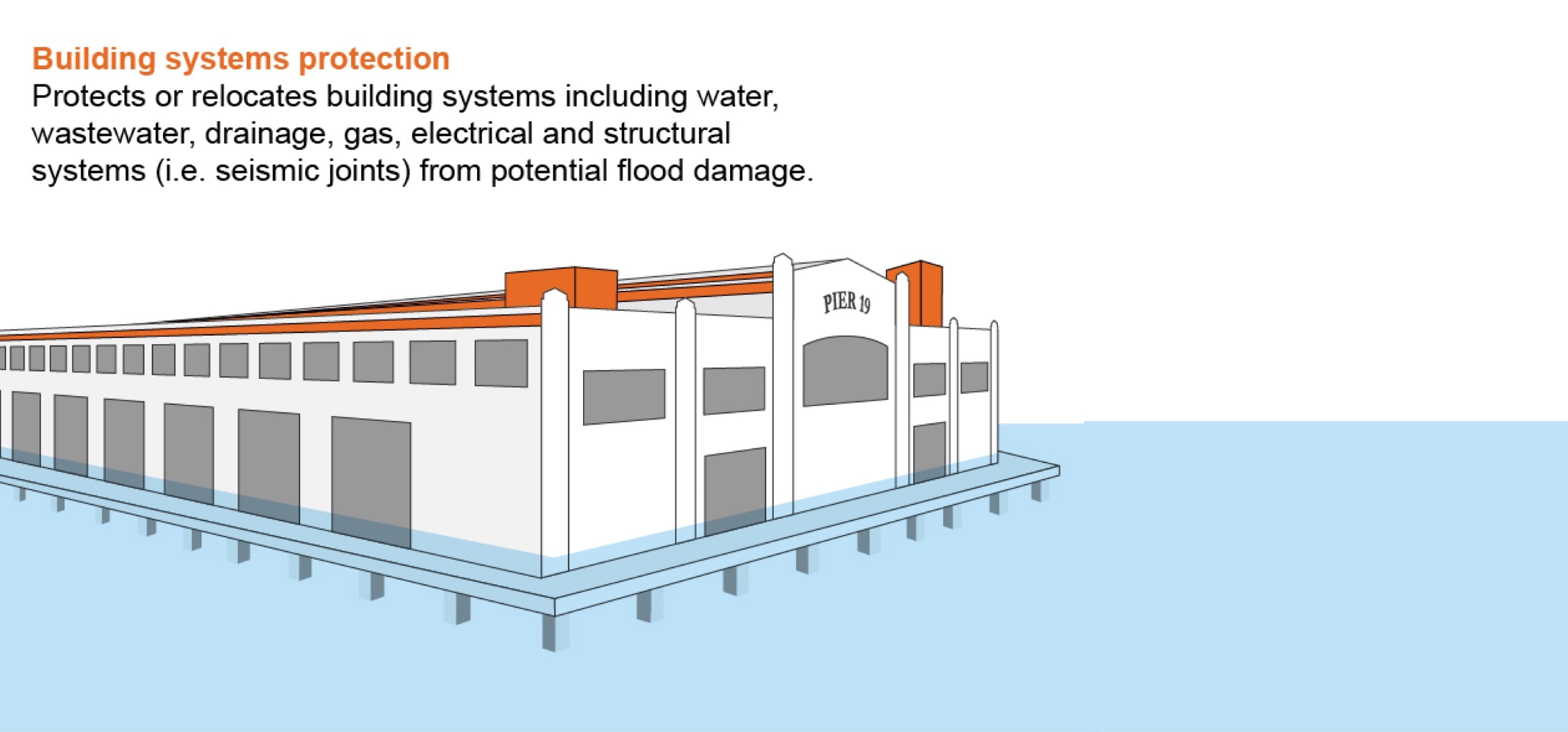
The proposed resiliency measures are intended to protect the existing structures from flood risk over a substantial portion of this century, reduce the amount of construction needed on the structures, lessen the disruption to the historic waterfront area, and limit the capital costs needed to rehabilitate the underused piers.

Integrating floodproofing measures into pier restoration plans will help San Francisco preserve the value of its waterfront spaces. If implemented, the flood mitigation strategies will protect more than 15 piers from sea level rise and make 40 acres of land usable for flexible, mixed-use developments. Millions of people will be able to experience everything the San Francisco bay has to offer for decades to come.
